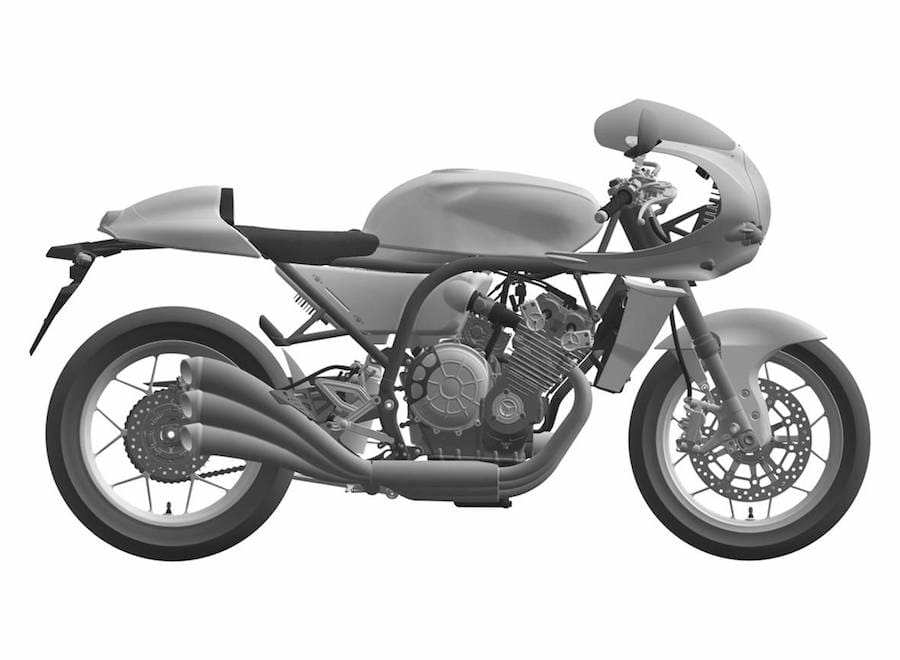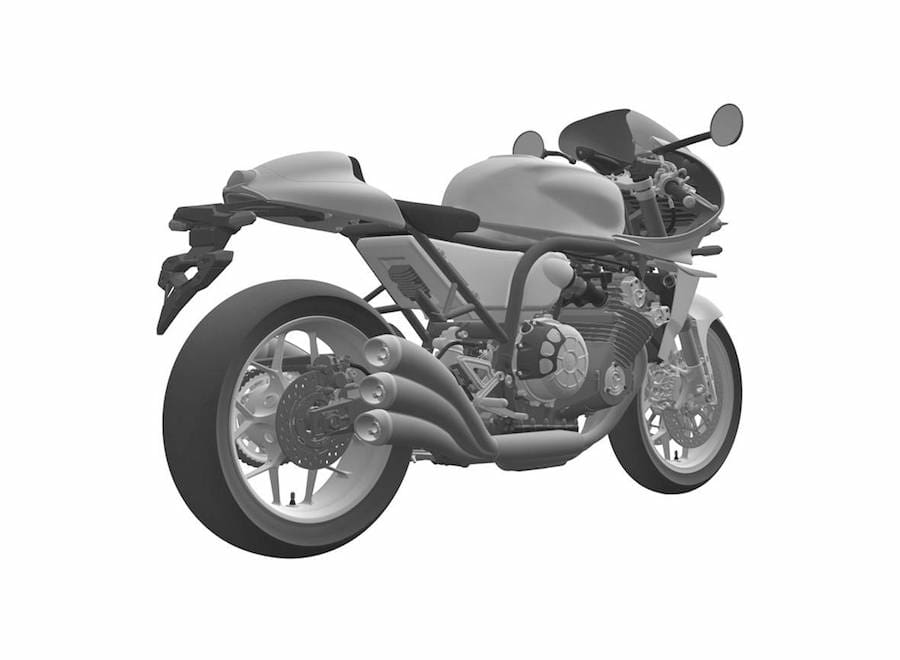This year marks Honda’s 70th anniversary and there’s long been speculation that Big Red will launch a spectacular model to celebrate – and this might just be that bike.
Revealed in official patent images, it’s an in-line six-cylinder, neo-retro sportsbike that clearly takes its inspiration from the legendary CBX, which was a huge success in Australia when it made its debut exactly 40 years ago.
At a glance, it would be easy to assume this is nothing more than a flight of fancy, a concept bike to draw show crowds and then get mothballed. But closer examination reveals surprising design elements that suggest Honda has serious production intent.

First up, this isn’t the usual concept bike approach of glossing over all the niggling details that make a bike road-legal. These CAD models already include such elements as the rear licence plate hanger, complete with a legally mandated rear reflector. There are mirrors, indicators, a pillion seat and pegs, a bulky airbox, and production-style details like ABS sensors. In short, this bike meets the design requirements of a showroom model, and that’s a much more complicated task than simply knocking up a head-turning concept.
Predictions about performance and engine capacity aren’t easy. But looking at the engine’s physical size, it’s probably in the region of 1000cc, with its in-line six layout making it shorter but wider than a comparable four-cylinder.
Honda appears to be steering clear of the more radical elements of its technology, though. There’s no dual-clutch transmission, and suspension is resolutely modern; USD front forks and a rear monoshock operated via a rising rate linkage.
When will Honda show this bike in the metal? Well, Honda’s 70th birthday falls on September 24…
Four LED headlights, with massive heat sinks, combine with the retro bullet-style fairing.

Air-cooling fins are clearly a nod to the original CBX, but this engine is actually water-cooled, with a radiator up front and a water pump on the lower left hand side.
The tubular steel frame carries a huge under-seat airbox while the petrol tank is mounted on top of the frame rails.
The ABS-equipped brakes use two radial four-pot calipers at the front and a single two-piston caliper at the rear.
The unusual-looking cylinder head has additional pieces bolted near the ends of the two overhead camshafts. They could be actuators for a variable valve timing system to get gasses flowing efficiently at high revs.
Catalytic converters appear to be incorporated into exhaust collectors on either side, each joining three downpipes. The exhaust then splits back into six to reflect the original CBX design.
Although largely hidden by the distinctive exhaust, the swingarm looks to be a dual-sided design in aluminium.

By Ben Purvis











